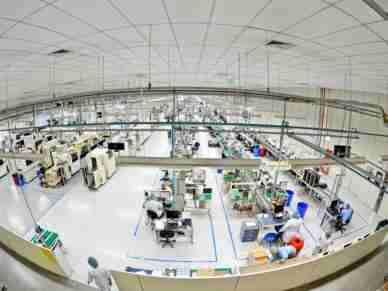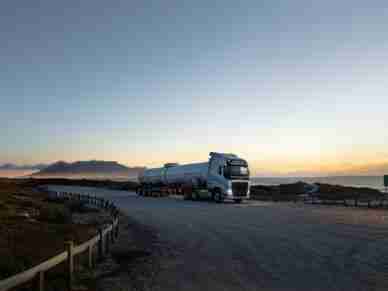What scuba reveals about supply chain management

What do scuba and supply chains have in common? A lot more than you might think.
For self-described workaholics like Art Koch, forcing themselves to get out of the office and clear their minds can be a revelatory exercise. In scuba diving, Koch found his “form of meditation.” There in the ocean’s depths, Koch found the brain relaxation and downtime necessary for deep work.
Koch, a supply chain transformation expert and consultant, began to see many parallels between his passion and profession. BOSS took a deep dive with him on those insights.
Back to Fundamentals
“If you don’t get the fundamentals or the foundation of scuba diving, you’re not going to have fun. You’re not going to enjoy it,” Koch told BOSS. “You’re going to stop, and worst case, it could kill you.”
The consequences might not be as dire for supply chain managers, but they’ll certainly have a miserable work experience if they don’t make fundamentals a foundational part of their approach. They won’t advance in their careers, and they could get themselves fired.
“People forget that. They come into work, and they just let the day take over them. You have to stop that.”
Just like in scuba, where divers perform a “buddy check” on each other to make sure their equipment is secured and functioning properly before going below the surface, supply chain managers need their own checklists that they run through every day.
These include steps such as checking to make sure the MRP ran and what exceptions it might contain, which of those are critical, and how old they are.

Art Koch
“You put things like that into where you can have a daily visual meeting where you have these parameters up and it’s binary, and it’s either red or green,” he said. “If it’s red you have to fix that before the next day, and if it’s green, you know you’re good. That kind of tells the organization if you’re stabilized.”
That also prevents disastrous entropy from entering the system. Too often, emergency shortages arise from something as simple as not verifying that suppliers have acknowledged purchase orders and can fulfill them. A simple and consistent checklist can prevent these surprise shortages and put managers in charge rather than scrambling.
Muck Diving
On an organizational level, companies need to do more “muck diving,” finding the hidden gems that can easily be overlooked. In scuba, muck divers can find rare and exotic creatures by searching through the sediment on the ocean floor. In supply chain management, it can mean discovering traits in people that would make them well-suited to the job.
 “I do a lot of turnaround work, and within turnaround work so often, the people in supply chain, the organizations that recruited them never looked at supply chain as a profession,” Koch said. “They filled it with good people, hard-working people, quality people, but they don’t always have the necessary development, the necessary certification or professional education to take them to another level.”
“I do a lot of turnaround work, and within turnaround work so often, the people in supply chain, the organizations that recruited them never looked at supply chain as a profession,” Koch said. “They filled it with good people, hard-working people, quality people, but they don’t always have the necessary development, the necessary certification or professional education to take them to another level.”
Hiring managers need to slow down and get to know candidates or employees better to unlock their hidden potential. Koch listed honesty, integrity, and emotional intelligence as qualities to look for in potential supply chain managers. People who ask a lot of questions and listen well but don’t stop at the first answer they hear make for good candidates. Some qualities often go overlooked.
“If somebody is quick-witted and kind of a wisecrack or a smart-aleck person, it usually means they’re pretty smart and they can get bored at work,” he said. “If I see somebody that’s smart and quick-witted and makes some wisecracks, I kind of home in on them and see if I can tap into what their abilities are.”
When you first start diving, you tend to float a few feet above the reef and look at all the big things, then dig a little deeper. It’s the same with management, where you have to focus on the macro things to understand the nuances. This is where you can find the “genius and castaways” in organizations.
Lighter Gear

One of the things veteran divers learn is to not get too weighed down with gear. Newbies hit the water with every gadget they can find, but that just drags you down, Koch says.
“It’s resistance in the water.”
So is carrying too much inventory. Needing to move boxes or pallets to get to the inventory you need slows down your organization. If people need to walk 20,000 steps a day through the warehouse, you have too much inventory and your storerooms are too big.
Inefficiency might be the least of your problems when you’re carrying so much inventory that parts become obsolete or their warranties expire.
Koch cited the example of a client that was carrying 18 months’ worth of parts that had a one-year warranty.
“Literally the next week they had a unit that they shipped out two weeks earlier where this module broke and they had to get a new one and put it in. It was an $18,000 cost. They had to send a repair technician overnight. Then there’s the ding from the customer, where they’re going, ‘What kind of crap are you sending us, if it’s only been here a couple weeks and it broke?’”
Whereas many companies see cycle counting as a way of maintaining inventory, Koch sees it as inefficient rework. With high inventory velocity, you don’t have to worry about cycle counting and aren’t doing the same work two or more times.
In the wake of Covid disruptions, many supply chains have been adding just in case inventory. That’s the wrong way to go, he said. The right thing to do is source regionally for regional markets.
“What happens is, because your lead times are shorter, you’re more flexible and responsive to customers’ changes and engineering changes. As you shorten your lead time, the variability drops. As that variability drops, your manufacturing process becomes more and more predictable. It’s all about getting the variability out of the equation.”
That will let your supply chain ride the tide smoothly without being bogged down, and you’ll be free to enjoy the wonders of the deep.














Leave a Reply